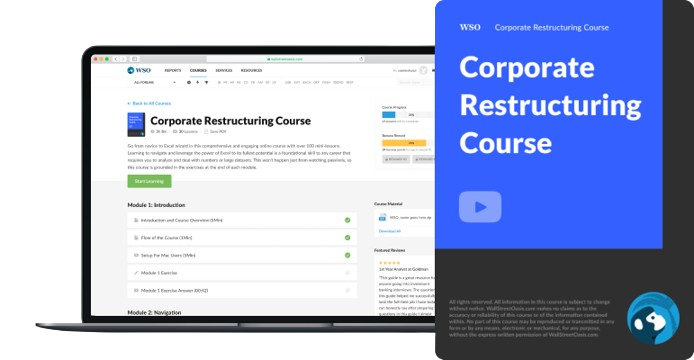Reverse Takeover (RTO)
Entails the share-for-share acquisition of a more prominent unquoted firm
What Is A Reverse Takeover (RTO)?
A Reverse Takeover (RTO) entails the share-for-share acquisition of a more prominent unquoted firm by a smaller quoted company. The shareholders of the larger unquoted company will need to be issued a sizable number of shares in the listed company to purchase the more prominent unquoted firm.

As a result, the more significant unquoted business's current shareholders will control the quoted company following the takeover because they will own most of its shares.
Upon completion of an reverse takeover, it is usual for the listed business to adopt the name of the previously unquoted firm and be run by the senior management team from that company.
The previously unquoted company has effectively become listed on the stock exchange thanks to the reverse takeover. By joining Westbury, a real estate and logistics firm, Eddie Stobart, a road transport business with headquarters in the UK, gained a listing in this fashion in 2007.
Reverse Takeovers have frequently been referred to as the inferior version of initial public offerings (IPOs), possibly due to US research demonstrating that firms that list via reverse mergers have lower survival rates and perform worse than firms that list via standard IPOs.
Key Takeaways
- Reverse Takeover (RTO) involves smaller publicly traded companies acquiring larger unquoted firms, leading to a shift in control and often management changes.
- After a Reverse Takeover (RTO), the public company often adopts the name of the acquired private company and is usually led by the private company's management team.
- Reverse Takeovers can be traded through various methods, such as stock trading or Contracts for Difference (CFDs), where investors speculate on share price movements.
- Target companies in Reverse Takeovers may be valued at a premium, given the perception that RTOs are quicker and easier than IPOs.
Reverse takeover examples
The reverse takeover of Warren Buffet's investment company Berkshire Hathaway into the public market is a well-known example. Buffett acquired Berkshire Hathaway, a manufacturer of fabrics, in 1965 but later sold off its textile division and combined it with his insurance conglomerate.
He published his holding company with the aid of one of the most well-known reverse takeovers in history.
Another well-known instance is the reverse merger of Burger King and Justice Holdings, a publicly traded shell company that took over Burger King in 2012. After being acquired by 3G Capital in 2010, the fast-food restaurant became private 18 months later.
According to the agreement between Justice Holdings and 3G Capital, Burger King is again a public business.
Reverse takeovers can be traded in a variety of ways. The most common method is stock trading, which is significantly different from investing because you don't own the shares. In its place, you are guessing which way the shares will move.
If you go long, you anticipate a price increase; if you go short, you anticipate a price decrease. During this policy, there are two ways to trade shares: using a contract for difference (CFD).
In a contract for difference (CFD), you consent to trade the price difference between when you open and close your position in the company's stock.
Benefits of a Reverse Takeover
As was already said, an reverse takeover effectively allows a firm not yet quoted to become listed. As a result, the company reaps the rewards of the public trading of its securities, precisely like with an IPO.
The advantages of an RTO are:
1. Access to capital markets
As a listed firm, more financing is probably accessible, and it's probably cheaper than it would be if the company were still unquoted.
2. Increased corporate value
Potential investors will view the company's shares as less risky because the company will have to follow the necessary laws and regulations since the shares will be listed.
Additionally, they will be aware that the shares are liquid and that a buyer will be available whenever they choose to sell. As a result, investors are expected to place a higher value on the claims.
3. Increased capacity for carrying out additional takeovers
Once a company's shares are listed, it can buy other businesses by engaging in different share-for-share transactions.
4. Improved capacity for share-based incentive plans
After a company's shares are listed, share-based incentive plans can be crucial for luring and keeping high-caliber staff.
5. Coverage by current analysts
Analyst coverage for a listed business subject to an RTO is probably already in place, and it typically remains so after the RTO. However, IPO-using companies can find it difficult to attract significant analyst attention, mainly if they are smaller.
Potential investors might not know much about the company without sufficient analyst coverage and might not be interested in investing.
Drawbacks Of a Reverse Takeover
The idea of a reverse merger can be viewed from another perspective. Here are some disadvantages of a Reverse Takeover based on researchers:
1. Lack of knowledge
A firm that obtains a listing through an RTO can discover that it lacks the knowledge necessary to comprehend and cope with all the rules and processes listed companies must follow.
2. Reputation
As was previously said, an RTO is frequently seen as a less expensive version of an IPO. As a result, investors may not view companies that obtain their listings in this manner as favorably as those that have completed an IPO. The causes of this, in part, can be traced back to recent events.
3. Risks
Investors need to be aware of the higher risk associated with companies achieving a listing in this fashion because an RTO receives less scrutiny than an IPO.
To uncover potential issues or liabilities, the unquoted firm conducting the RTO must ensure that the listed company it is taking over is appropriately examined.
4. Regulation
Even though less regulation and scrutiny are involved in RTOs than in IPOs, it must be acknowledged that there are still many regulatory obstacles to clear.
5. Reduction in share price
Due to historical issues, many listed companies that could serve as potential RTO targets are in that situation.
Therefore, they might have investors anxious to leave the business as soon as a good chance presents itself, and as a result, they might "dump" their shares quickly after the RTO is through.
6. Costs
Although it is typically less expensive than an IPO, substantial direct and indirect expenditures are still involved. Therefore, the overall cost is sometimes much higher than initially anticipated.
Other Disadvantages
Although a reverse merger may be less complicated, it needs to be done with care and compliance in mind.
1. Regulation expenses
An RTO, as was previously noted, is a complicated procedure, and it will be expensive to ensure that the regulatory obstacles are adequately cleared.
2. Cost of acquisition
Potential targets for listed companies are frequently valued at a significant premium to their genuine value because an RTO is commonly viewed as more straightforward and quicker than an IPO, particularly in the Chinese market.
3. Shareholder relations
RTO transactions only truly offer liquidity to a formerly private firm if there is genuine investor interest in the company, even though they may profit from current analyst coverage.
A thorough investor relations and investor marketing program will frequently be needed to develop this interest. This is also another potential RTO indirect cost.
Initial Public Offering (IPO) Vs Reverse Takeover (RTO)
Let us take a look at the table below to understand the difference:
| Reverse Takeover | IPO |
|---|---|
| A quick way for a firm to list on the stock exchange (30 Days). | Can take months or even longer complete. |
| Inexpensive (cost what it would cost to offer the private firm majority ownership in the publicly traded company's stock). | Expensive (Legal and administrative expenses, which also include underwriting fees). |
| Because a reverse takeover is completed quickly, a company is less dependent on favorable market conditions than during an IPO. | Many businesses have invested time and money in an IPO only to see it postponed because of market conditions. |
| Can also indicate that a corporation is dishonest or attempting to deceive investors due to a lack of regulatory knowledge and oversight. | IPOs have the advantage that they are generally regarded as a more legitimate way for a firm to go public. |
Therefore, to summarize, every business has stock shares. A company will make some stock shares available when it goes public. The company's stock shares are available for purchase by investors and traders, which provides funding for expansion.
However, a company can go public in other ways besides an initial public offering (IPO). For example, reverse mergers have gained popularity as a substitute in recent years.
Conclusion
Because a reverse takeover is completed quickly, a company is less dependent on favorable market conditions than it would be for an initial public offering (IPO).
Many businesses have invested time and money in an IPO only to see it postponed because the market conditions—often the number of purchasers in a particular market—were unfavorable to the company's listing.
Reverse takeover trading can be highly complex and time-consuming. We've listed a few crucial points for you below to assist:
-
Companies can become public through reverse takeovers without spending the time or money necessary for an IPO.
-
It has significant advantages for the company but can be risky for traders and investors.
-
Research must always be done before buying or selling any company's stock.
-
This can be challenging because the private company is not required to disclose its financial information until the reverse takeover is complete.
Researched and authored by Charbel Yammine | LinkedIn
Free Resources
To continue learning and advancing your career, check out these additional helpful WSO resources:




or Want to Sign up with your social account?